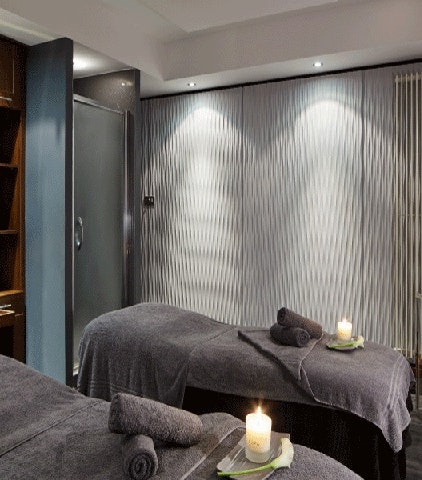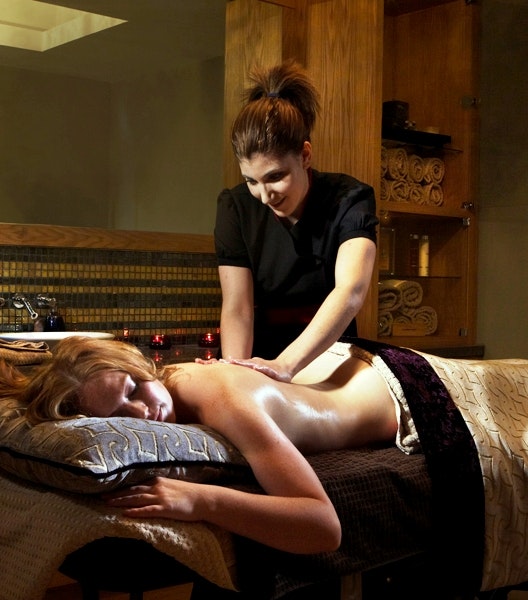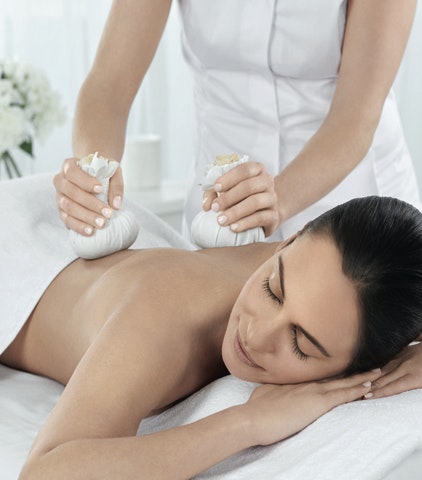
A guide to steam rooms
Steam rooms harness the properties of extreme, moist heat to offer a range of potential health and wellness benefits. A short, sweaty session in a steam room can also aid relaxation and recovery, making them a great addition to a spa day or spa break. In this guide, we answer some common questions about steam rooms to help you to get the most from this popular spa leisure facility.
What is a steam room?
A steam room is simply an enclosed space with bench seating. It has a generator filled with boiling water that provides a hot and steamy environment. You simply relax in the room for a short period of time and let the wellness properties of the heat and steam work their magic. Some steam rooms benefit from added aromas, essential oils, salts or botanicals, all of which can increase the benefits and enhance the experience. If you would like to try one for yourself, you can find steam rooms at many of our fabulous spas, including our exclusive 5 star spa hotels.
What is the difference between a steam room and a sauna?
The key differences between steam rooms and saunas are the heat and humidity inside. Saunas reach temperatures of up to 195F (90C). However, the humidity is just 5% to 10%, which means it is a dry heat. Think of it like a desert-type environment. A steam room, on the other hand, features temperatures of up to 110F (43C), but with the humidity reaching a hair-frizzing 100%. Think tropical rainforest! It is this humidity that brings many of the potential health benefits that we discuss below. As well as steam rooms and saunas, you might find reference to other types of heat-based spa facilities, such as samariums and Rasul (or Rhassoul) mud chambers. You can find out more in our guide to thermal spas.
What are the health benefits of steam rooms?
For guests who do not have any of the underlying conditions discussed below, short sessions in a steam room can have a range of potential health benefits for the body and mind. These include:
Lowering blood pressure
Steam rooms have been shown to reduce blood pressure, while also contributing to heart health. However, if you have blood pressure issues (high or low), it is important to seek medical advice before your spa day, as the steam room environment may not be suitable for you.
Improving circulation
There is some evidence to suggest that the moist and steamy environment can improve the efficiency of the body’s circulatory system. This is due to the steam helping to dilate the small blood vessels or capillaries, leading to an easier flow of oxygen-carrying blood through the body.
Clearing congestion
If you’ve ever had a blocked nose and found your breathing became easier following a hot shower, you’ll appreciate how a steam room can help to clear congestion. The heat opens the body’s mucous membranes, promoting free and deep breathing and clearing the sinuses and lungs. While this can help with asthma and other respiratory issues, it is important to check with your doctor first.
Boosting the immune system
The steam room environment acts to stimulate the body’s leukocytes, which are infection-fighting cells, giving your immune system a boost. The main benefit of this is to keep your body healthy overall, rather than to kill off existing infections.
Loosening stiff joints
Steam rooms can aid movement and flexibility, helping to loosen up those stiff joints. In addition to aiding post-exercise recovery, some people enjoy a few minutes in a steam room prior to a workout, as it can act as a warm-up session for the muscles.
Reducing stress
If you’re feeling stressed out, you might benefit from a session in the steam room. The heat can promote the release of endorphins, the ‘feel good’ hormone, while decreasing the stress hormone cortisol.
Promoting skin health
The steamy environment can help to keep the skin healthy. In a steam room, you will sweat (a lot!), which opens up the pores, letting out toxins and dirt and cleansing the surface of the skin. Steam room sessions can even aid conditions such as acne. However, if you have psoriasis or eczema, you may want to avoid them, as the hot and sweaty environment might cause a flare-up.
Aiding workout recovery
Many people enjoy a brief session in a steam room following a workout or sports activity. The heat can relax the muscles, reducing the risk of delayed onset muscle soreness and promoting recovery. Steam rooms can also help to preserve muscle strength.
Burning calories
While steam rooms are not a substitute for a healthy diet and regular exercise, they do promote burning extra calories because the extreme heat raises the heart-rate (like cardio activity). However, steam rooms are not good for permanent weight reduction, as you will only lose water weight through sweating. It is important to rehydrate the body to replace these lost fluids after your steam room session.
What are the risks of steam rooms?
As with many thermal spa facilities, steam rooms are not without risk. As mentioned above, steam rooms raise the heart rate, while the environment can encourage the growth of certain bacteria, which means they are not suitable for all guests. Indeed, some groups should avoid them altogether. For example, pregnant women should stay out of the steam, as should anyone with a fever. If you are recovering from surgery or have medical conditions including (but not limited to) a compromised immune system, an infection, epilepsy, a heart condition, or very low or high blood pressure, check with a doctor before your spa visit and always let the spa know about any health issues.
One of the most important things to remember is that steam rooms can dehydrate the body. This means that you should drink plenty of non-alcoholic liquid before and after your session. It is also crucial to limit your time in the steam. If you are new to steam rooms, start with no more than five minutes and build to a maximum of 15 minutes. If you feel dizzy or unwell in any way, leave the room immediately, drink lots of water, and rest somewhere cool.
What is the steam room etiquette?
The first thing to note is that swimwear should normally be worn in the steam room. In some cases, just wrapping a towel around you may be acceptable. However, nudity is usually not permitted in spas (outside the changing areas). If in doubt, ask! Always bring in a towel to sit on for sanitary and hygiene reasons and be sure to wear flip-flops. Also, don’t forget to close the door behind you when you enter to seal in the heat. While spa steam rooms are communal and often unisex spaces, it doesn’t mean that everyone wants to be social! Treat the steam room as a quiet space.
What else do I need to know?
It is advisable, and sometimes required, to shower before entering the steam room. A lukewarm shower after your session is a good idea, too, to get rid of any bacteria or toxins that have accumulated on the skin. Also, remove metal jewellry, as it will get hot and may burn the skin. Be aware that when you leave the steam room, you may feel a little lightheaded or dizzy. Again, drink plenty of water and relax somewhere cool until your temperature and heart rate come back down. Finally, remember that when it comes to sweating it out in the steam room, less is more!




